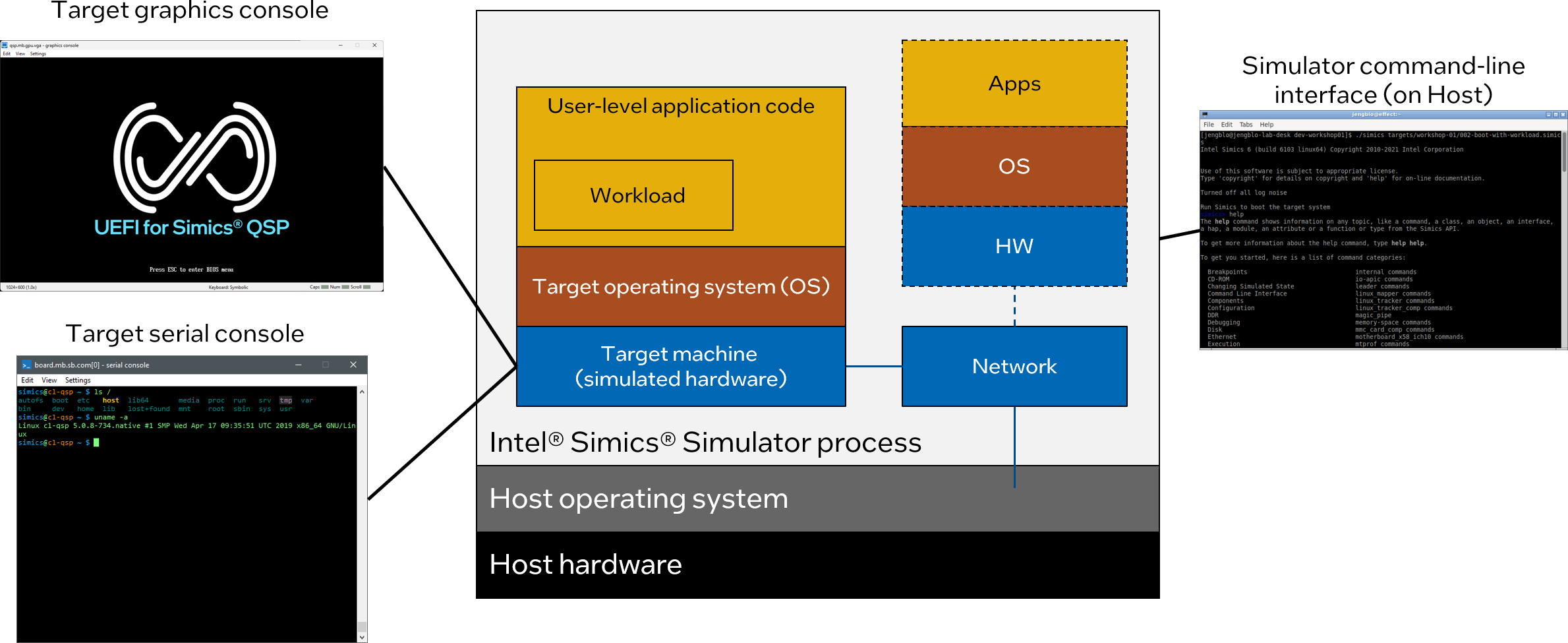
This document provides an introduction to the Intel Simics product and some of its features. Intel Simics is a full-system simulator mainly targeting software development and analysis. To do so, it provides hardware and software inspection, dynamic system configuration, hardware modelling tools, scripting, and a rich set of other features. Unlike many other virtual machine products, the Intel Simics simulator does not focus on being a hardware replacement, although it can be used in that way.
The introduction in this document is in the form of a few short step-by-step tutorials.
Scripts, screen dumps and code fragments are presented in a monospace font.
In screen dumps, user input is always presented in bold font, as in:
Welcome to the Simics prompt
simics> this is something that you should type
The character "/" is used to separate directories and files, for Linux. If you are using Windows, you should read the character as "\" instead.
This section presents the terminology used throughout Intel Simics documentation.
To simulate a target machine, a configuration must be created. A configuration consists of objects, object hierarchy, properties, and connections between objects.
The default way of creating a configuration is to load a target. For legacy reasons, it is also possible to create configurations by running CLI or Python scripts.
When creating a configuration for a specific target machine, it is often possible to customize properties of the target machine. For targets, the configurable parameters are called target parameters. (see Simics User's Guide).
A simulation session can contain multiple target machines, for example when simulating a network.
For interaction with the target system, the simulator can show graphics consoles and serial consoles.
